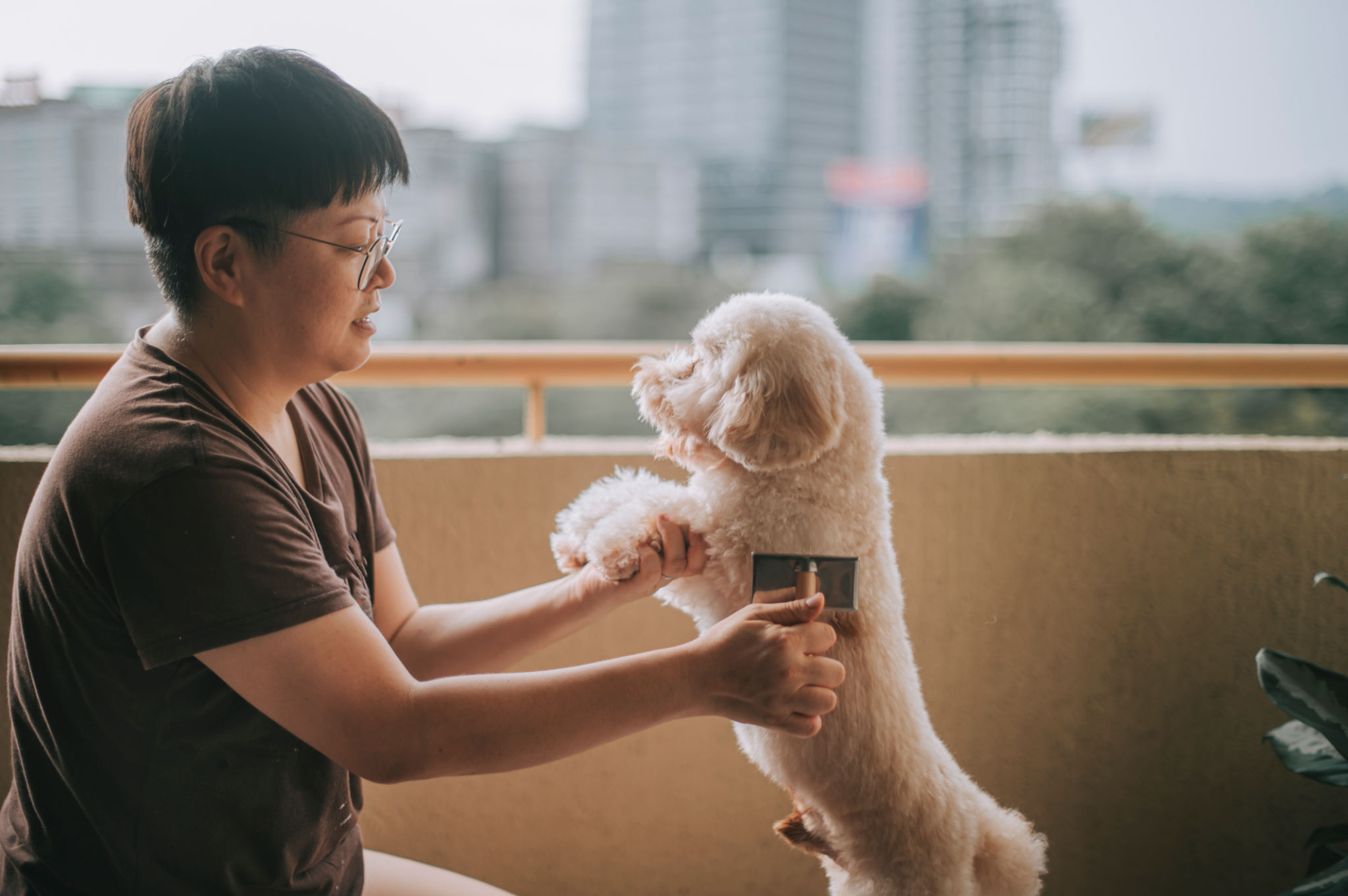DIY Dog Grooming Tips for Between Professional Visits
Maintaining Your Dog's Coat
Regular grooming is essential to keep your dog looking and feeling their best. Between professional grooming visits, you can take several steps to maintain your dog's coat at home. Brushing is crucial, as it helps remove dirt, debris, and loose hair, preventing matting and tangles. Depending on your dog's coat type, you may need to brush daily or weekly.

Use a brush suited to your dog's coat type. For example, a slicker brush is excellent for long-haired breeds, while a bristle brush works well on short-haired dogs. Regular brushing will not only keep your dog's coat healthy but also provide bonding time.
Bathing Your Dog
While professional groomers give your dog a thorough bath, you can also bathe your dog at home as needed. Use a dog-specific shampoo to avoid skin irritation. Make sure to rinse thoroughly, as leftover shampoo can cause itching. Bathing frequency can vary based on your dog's lifestyle and coat type.

When drying your dog, a towel might suffice for short-haired breeds, while a blow dryer on a low setting can be helpful for longer coats. Always ensure your dog is completely dry to prevent skin issues.
Trimming Nails
Nail trimming is another crucial aspect of your dog's grooming routine. Overgrown nails can cause discomfort and lead to health issues. Use a dog nail clipper or grinder, and be cautious not to cut too close to the quick, which can cause pain and bleeding.

If you're unsure, trim a little at a time and check for the quick, especially if your dog has dark nails. Regular nail trimming will keep your dog comfortable and prevent potential injuries.
Cleaning Ears and Teeth
Keeping your dog's ears and teeth clean is vital for their overall health. For ear cleaning, use a vet-approved ear cleaner and gently wipe the outer ear with a cotton ball. Avoid inserting anything deep into the ear canal.
Dental hygiene is equally important. Use a dog toothbrush and toothpaste to brush your dog's teeth regularly. This helps prevent plaque buildup and gum disease, ensuring your dog has fresh breath and healthy gums.
Handling Minor Grooming Issues
Despite your best efforts, minor grooming issues can sometimes arise. For instance, if you notice a small mat or tangle, gently work it out with a detangling spray and a comb. Be patient and avoid pulling hard, as this can be painful for your dog.

Regular check-ups with your groomer will help address any persistent issues. By maintaining a consistent grooming routine at home, you can ensure your dog remains happy and healthy between professional visits.
